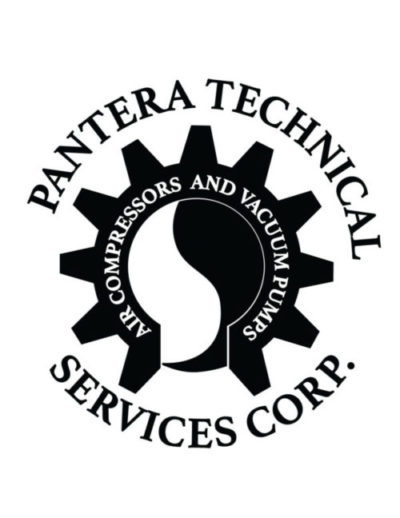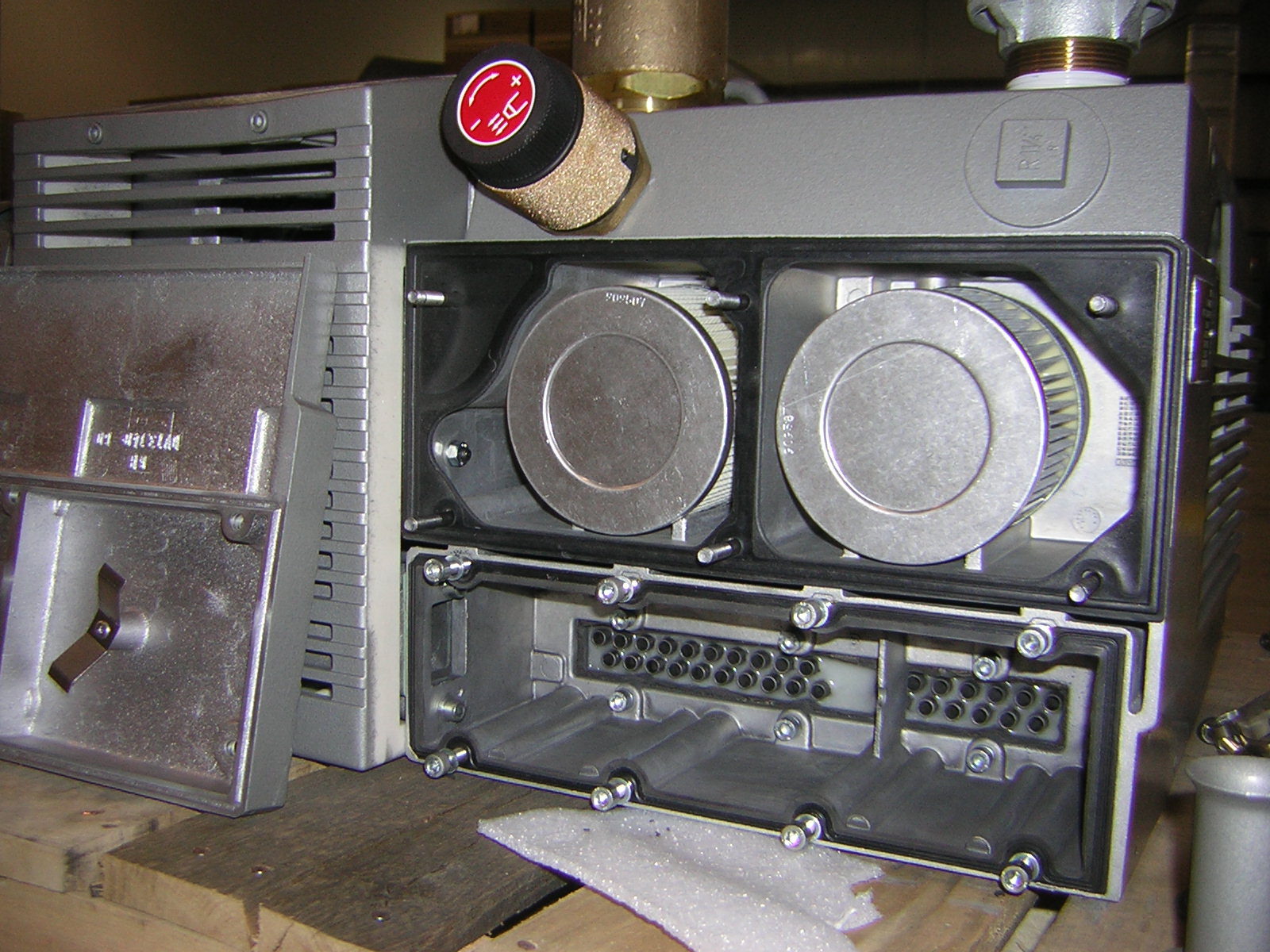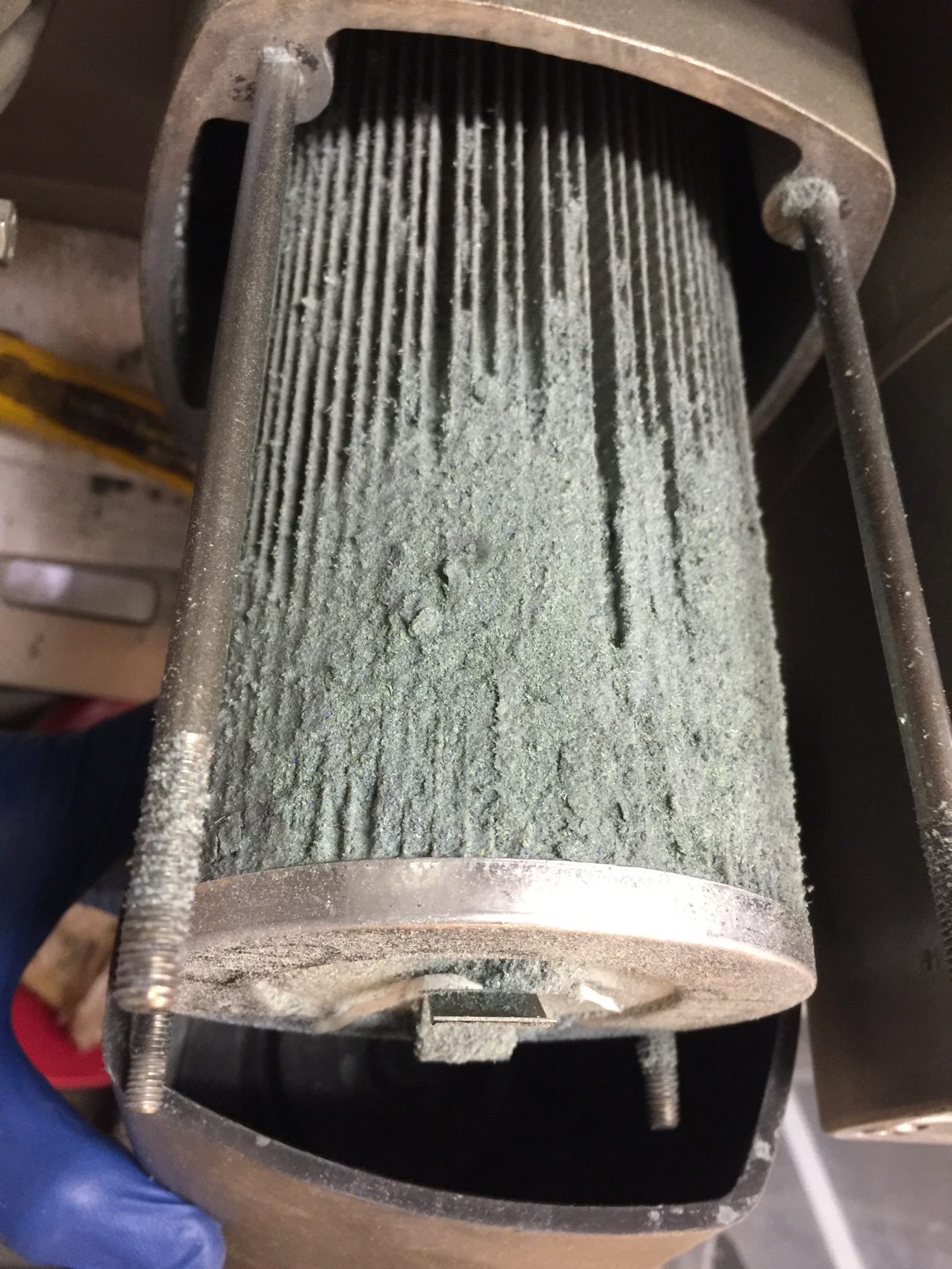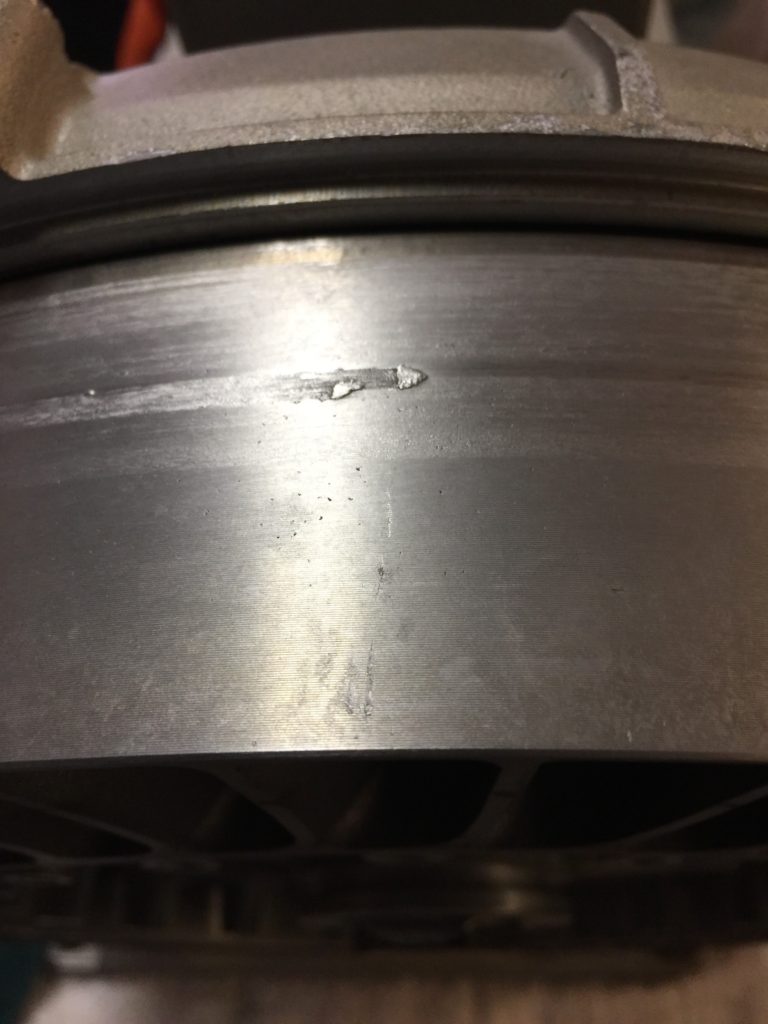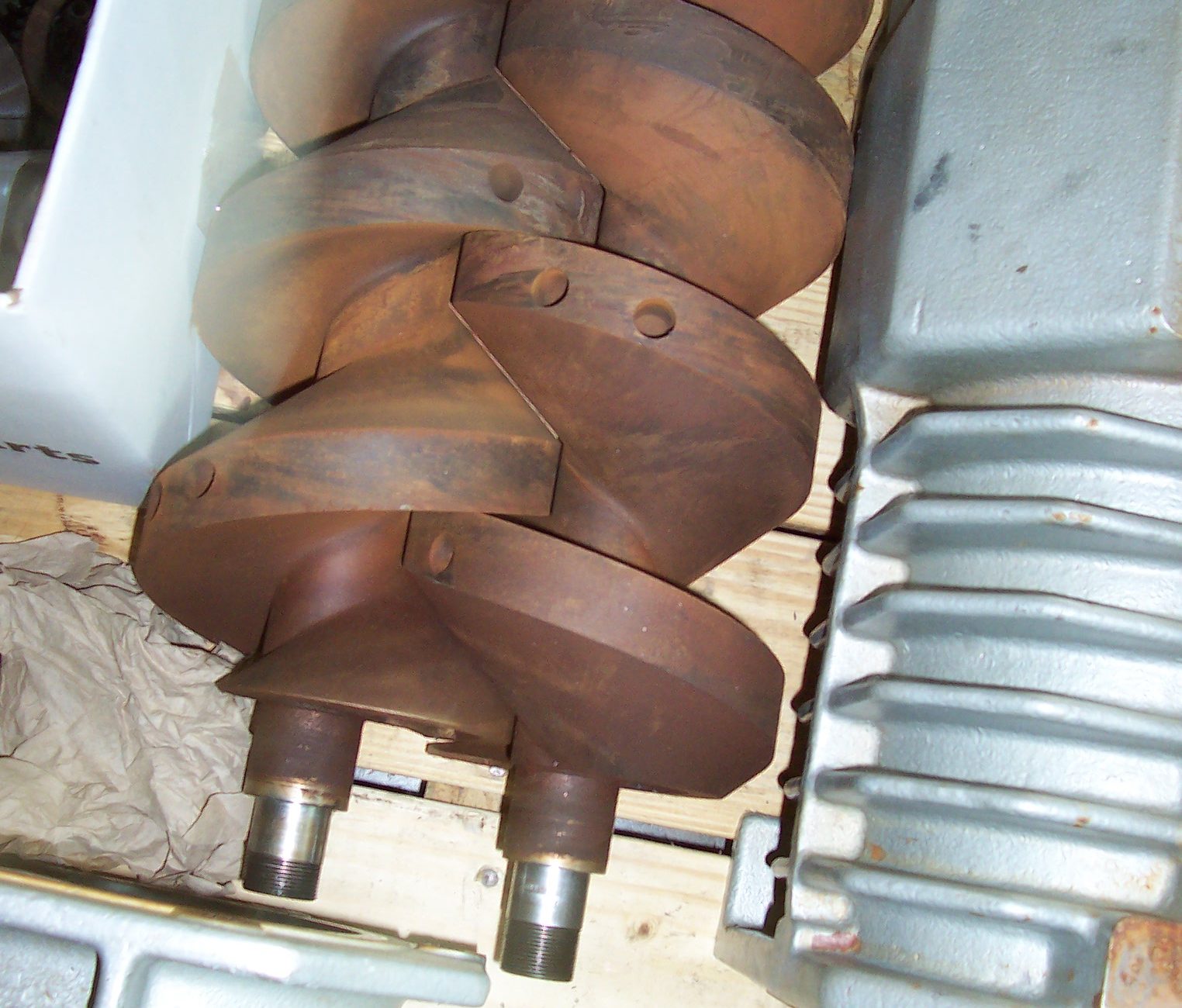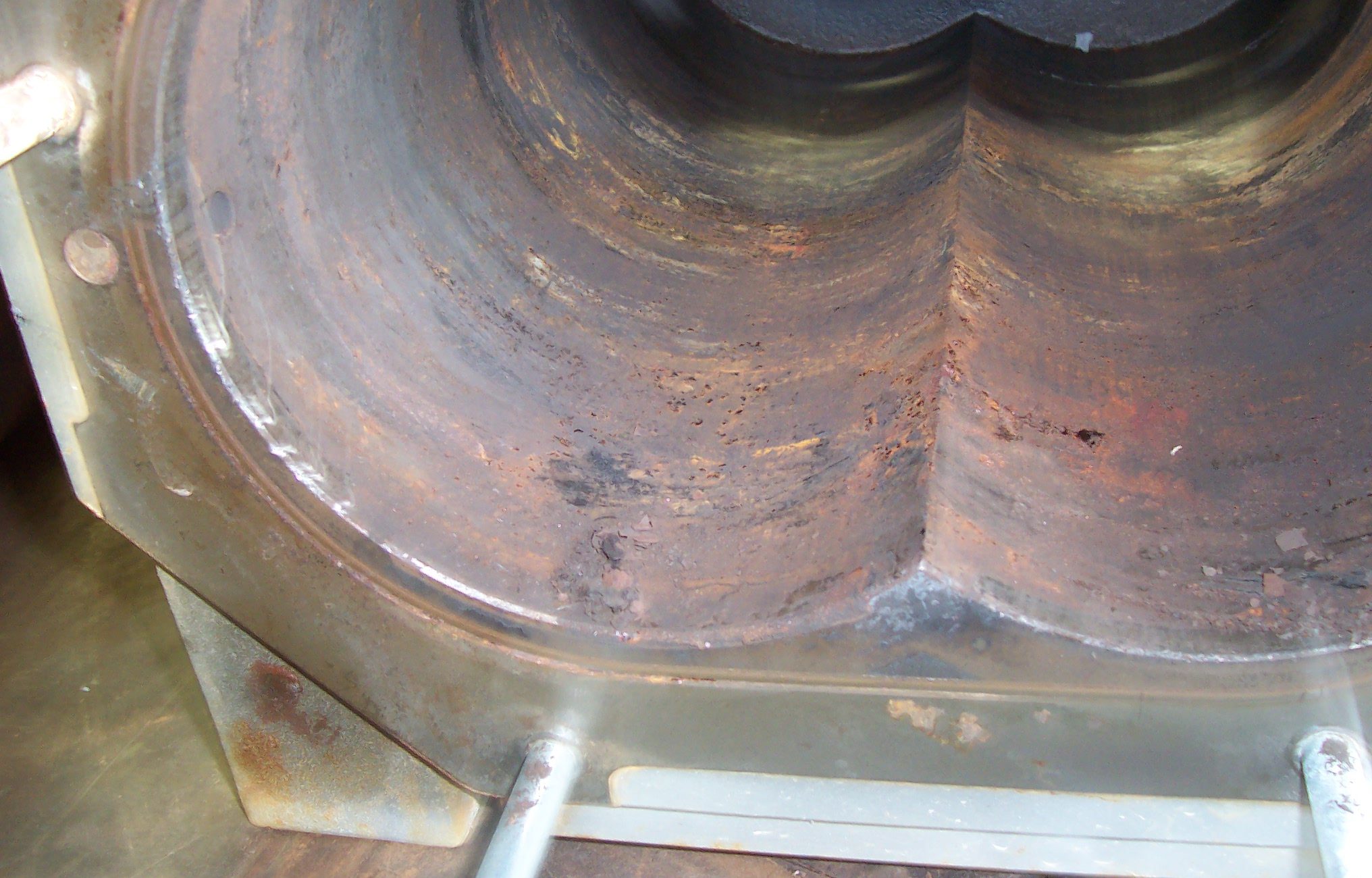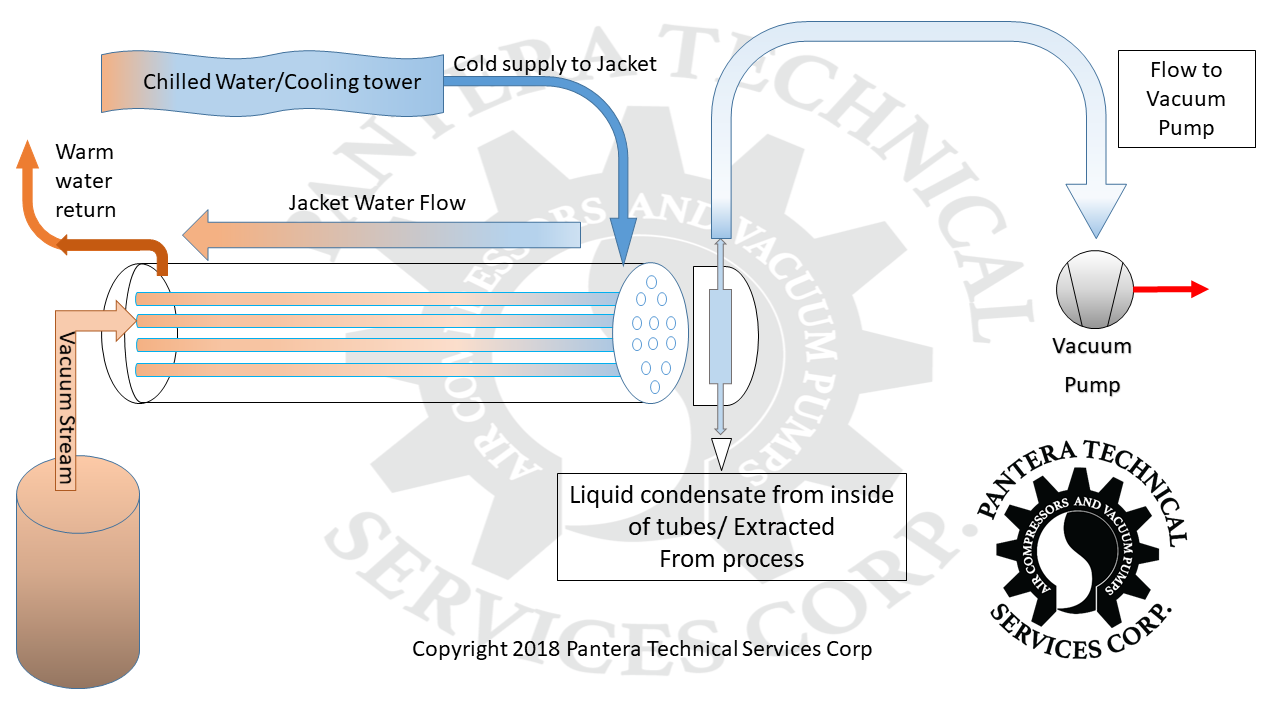It is usually very hard to find an end user that is versed in the science of filtration of their gas stream. It is even harder to find one that wants to approach the issue of filtration under vacuum. but fear no more, we will be discussing the issues of filtration, separation and condensation under vacuum. Just follow us in the next section below.
The first item we want to talk about is filtration. The regular industrial vacuum pump is designed to handle air. When designed, the pump is expected to see CLEAN air. Many pump failures primordial cause of failure is a dusty environment, a clogged inlet filter, a broken filter element or any combination of these factors.
Integral Filters into pump housing. Copyright 2016 Pantera Technical Services Corp
Inlet filters can get clogged with process dust, debris or product. Copyright 2016 Pantera Technical Services Corp
Here you can see a damaged rotor by a steel clip that passed thru the clogged inlet filter, jamming the rotor. Copyright 2016 Pantera Technical Services Corp
Is it important to keep the inlet filters clean, but if the process is too dusty or you expect a volume of debris that is too high to keep up with, you should consider a bigger pre-filter with a clear bottom or a big enough side port that will allow for to clean the accumulated solids easily. These filters are instrumental in keeping your pump from being damaged.
There are several companies that sell these pre-filters. make sure you ask for one that has “Tangential separation” or “Tangential flow” . This feature is key to provide a tortuous path to make the solids drop and clean the stream before it can damage the pump. Remember to ask for the optional clear bottom, or clear sight glass so the operator can evaluate the filter condition with certain frequency and clean it accordingly.
If this pre-filter has a “Bag” or filter element, also order the optional pressure/vacuum gauges to measure pressure drop across the filter when it is in operation. Logging these pressures will help determine how often to clean the filter housing and replace the filter media inside of it.
Cleaning the vacuum stream is very important if the process stream contains solids, crystals or pellets that are hard enough to cause erosion inside of the pump.
This is very critical with dry vacuum pump technology. That can come in the form of a rotary claw pump or a rotary screw pump. This erosion will not only take away any coating impregnated in the pumping chamber, it will leave exposed the rotating element and the vacuum chamber and they will corrode and can eventually cause the pump to seize and not turn freely.
The crystalline nature of the process eroded the screws, which are now victim of corrosion. Copyright 2016 Pantera Technical Services Corp.
Vacuum pump housing stripped of its protective coating. Copyright 2016 Pantera Technical Services Corp.
Hopefully these last two sections have conveyed the importance of proper filtration before any vacuum source.
It is very important to address this filtration and separation issue as early as possible to extend the mean time between failures of any vacuum pump. These are universal principles.
Let move on now to a more esoteric and very different principle in Applied Vacuum Technology.
Lets talk about Condensers.
They can also be called: Pre-Condensers, In line separators, or even, heat exchangers.
Whatever they are called they will all be exposed to the vacuum stream and it is our intent and purpose to use them to our advantage. Take a minute to see the flow of vapor from the rocess to the heat exchanger and the flow of the cooling water loop thru the jacket of this typiccal heat exchanger arrangement.
The most common condenser is constructed with an array of tubes, inside or a bigger shell. These are called tube-and-shell heat exchangers. Depending on the specific application and the construction materials, they can be used with air, steam, oil or water water in either side.
As they are exposed to process and temperature changes, it is customary to make the tubes out of stainless steel and the shell out of regular steel. In many exotic applications the tubes can even be made out of Monel, Inconel, Hastelloy or many other great materials- as long as you can afford them.
This interest of exotic materials arise from the need of needing to handle corrosive, toxic and poisonous gases. The caveat here is that the bigger and exotic the tubes, the more expensive they will get.
It takes proper training and design know how to make this decision in the best light possible as a too narrow of an exchanger will be cheaper, but also might not work at all as the narrow tube passages make the gas go faster in speed and the condensate gets blown off back into the pipe, thus rendering it useless.
You need to use a heat exchanger built specifically for vacuum process.
Take a minute to look at the typical layout below that depicts a typical flow representation coming from the process (the tank on the lower left) and the water coming from the chiller or a cooling tower.
How a heat exchanger should work on a vacuum system. Copyright 2018 Pantera Technical Services Corp.
As you can see, the tubes create droplets that come from the condensation happening inside of the tube side of the heat exchanger. That condensation should be drained away and that would create a cleaner flow to the vacuum pump.
This is simple physics. If the gas gets coooled and condenses- it turns itslef into droplets that will occupy a smaller footprint. Since droplets are heavier a properly designed heat exchanger will allow for them to be separated and to be drained at the bottom of the heat exchanger, that from now on will be known as “The Condenser”. These condensers for vacuum have to be specifically ordered and built per very specific requirements of flow, pressure, temperature and physical location within the system itself.
Every system and every application is different and every location is different. We typically specify this kind of system accessory depending on the specific requirements of your conditions.
If your vacuum pump keeps getting flooded with liquid, let us know and we will crunch the numbers for you. If the vapor load can be minimized, maybe a smaller vacuum pump can do the job, meaning major energy savings can be had with a vacuum system redesign.
If you have questions about how to handle the heat exchanger effluent , refer to our post that will discuss the difference between a “Barometric Leg discharge” and a “Continous drain drip leg” options.

